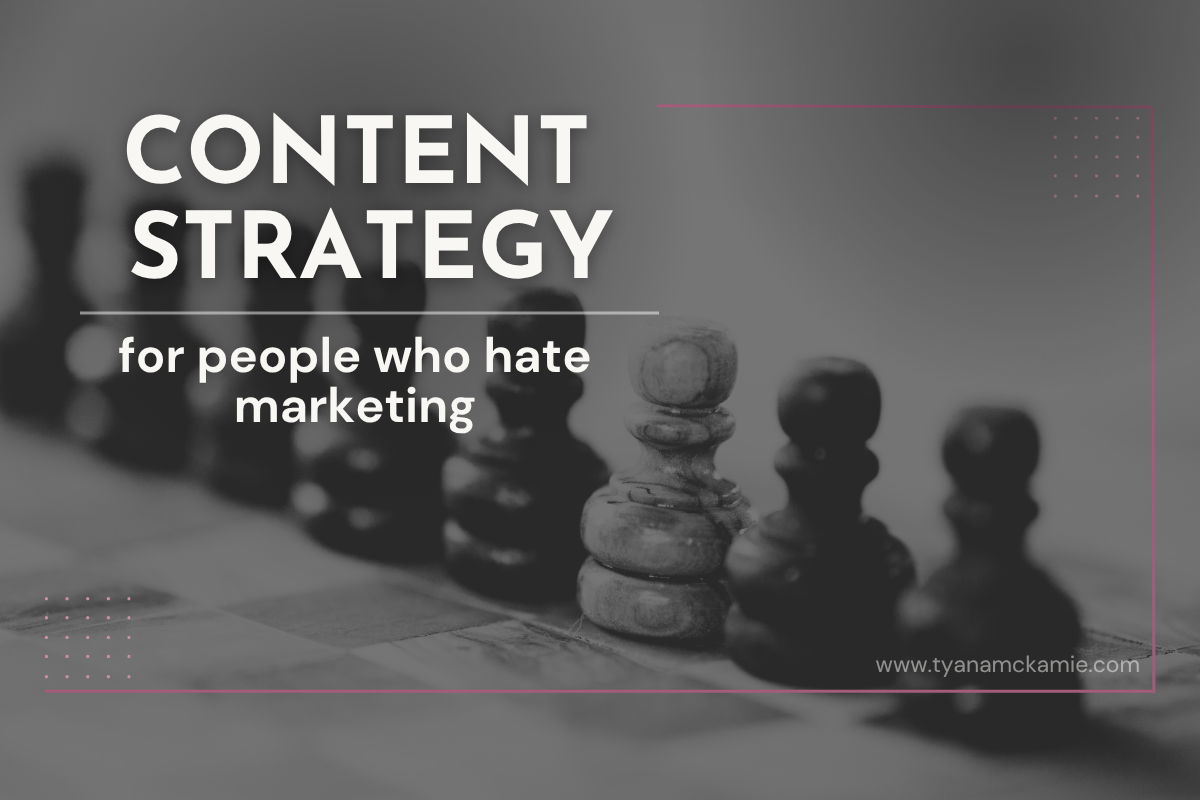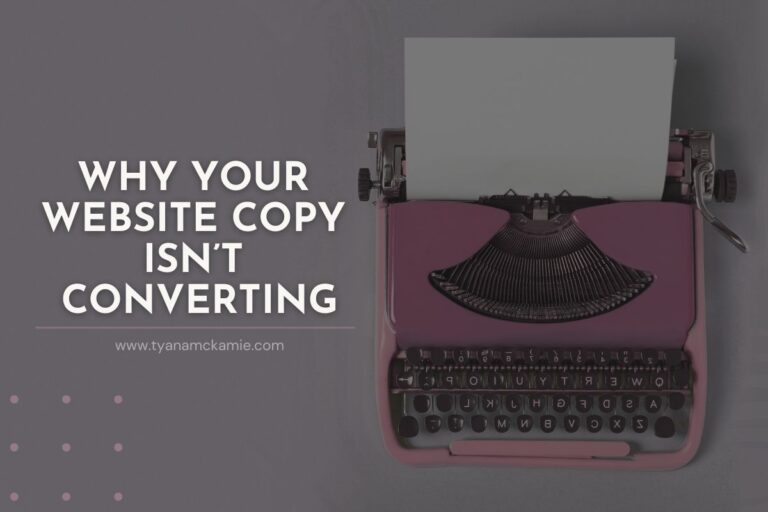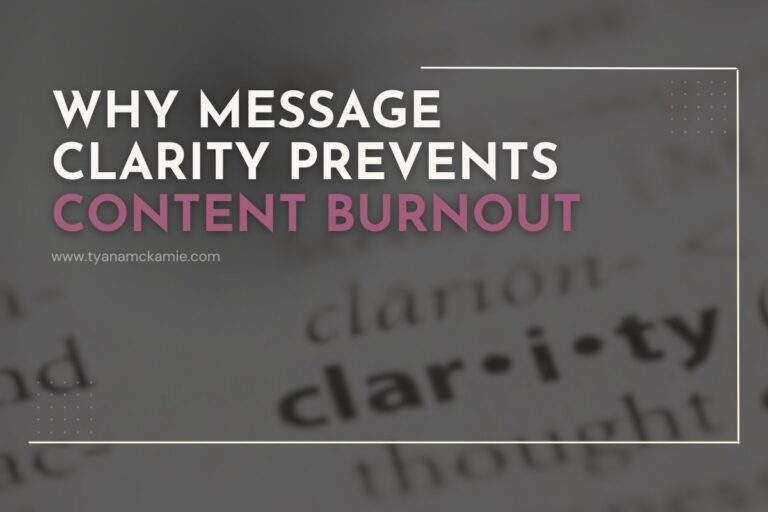Content Strategy for People Who Hate Marketing

Raise your hand if you’ve ever stared at your phone, trying to write a post, and thought: “Ugh. I sound like a walking sales pitch.”
Same.
You’ve been told you need to “show up consistently” and “share your expertise” and “build your personal brand.” You’ve saved the caption templates, bookmarked every “how to market yourself” article, and downloaded more content calendars than you’ll ever use.
But every time you sit down to write a post, it feels like you’re putting on a costume that doesn’t fit. Like you’re trying to convince people to care about you. Like you’re being… well, fake.
If you’ve ever tried to follow popular content advice and instantly wanted to hide under a weighted blanket, then I recommend you keep reading.
Most marketing advice wasn’t made for people like us. It’s designed for extroverted personal brands with endless time, confidence, and capacity. (Or, let’s be honest, a full team behind them.)
So let’s throw out the playbook and start over.
Why Most Content Advice Feels Gross (And Why That’s Valid)
Most marketing advice treats your audience like they’re walking wallets. Post three times a day. Share your morning routine. Tell people exactly what to buy and when to buy it. Point at floating words like a motivational magician.
It’s exhausting. And it doesn’t work for people who actually care about their clients.
Traditional marketing is built on interruption and persuasion. It’s about getting attention at all costs and then converting that attention into dollars. But if you’re someone who genuinely wants to help people, this approach feels manipulative.
You’re not a supplement company trying to sell belly fat tea. You’re a human being with real expertise trying to connect with other human beings who need your help.
The resistance you feel isn’t something to overcome. It’s information. It’s telling you that the advice you’ve been given doesn’t match who you are or how you want to work.
Promotion vs. Connection
Most people think marketing means promotion. But there’s a massive difference between promoting yourself and connecting with people.
Promotion is about you. Your credentials, your achievements, your transformation story. It’s about convincing people that you’re worth paying attention to.
Connection is about them. Their problems, their thoughts, their experiences. It’s about being useful and genuinely helpful.
When you focus on connection instead of promotion, content creation stops feeling like you’re begging for attention. You’re just sharing what you know with people who need to hear it.
You probably share articles and insights with friends all the time. You text them links to things you think they’d find interesting. That’s connection. That’s what good content actually is.
The goal isn’t to make people think you’re amazing. It’s to make them think, period.
The 4 Content Pillars That Don’t Feel Like Selling
If you want to create content that connects without feeling gross, focus on these four things:
1. Teach What You Know
Share your frameworks, explain your process, answer common questions. When you teach, you position yourself as a trusted resource without pitching.
You don’t have to be the expert on everything. You can just be one step ahead of the people you’re trying to help. Share what you’re learning, what you’re figuring out, what conversations changed your perspective.
This works because it makes you relatable instead of unreachable. People connect with humans who are still open to learning more, not gurus who claim to have all the answers.
2. Show Your Perspective
What frustrates you in your industry? What do you wish more people knew? What makes you different? Let people into your brain.
Pay attention to the thoughts that make you go “Am I the only one who thinks this?” Share those. The things that make you different aren’t weaknesses. They’re your biggest advantage.
Don’t water down your perspective to appeal to everyone. The right people will find you because of your opinions, not in spite of them.
3. Document Your Work
Talk about patterns you notice, frameworks you use, mistakes you see people make. Turn a client win into a short post about your process. Share a snippet from a call (with permission, obviously).
The key is to focus on the work itself, not your role in it. Instead of “I helped a client do X,” try “Here’s what happens when you do X.”
You’re not bragging. You’re showing your brain in action.
4. Invite Conversations
Post things that get people thinking. Share hot takes, ask questions, make observations. This builds community and reminds people you’re a human, not a brand bot.
Answer real questions people actually ask you. In client calls, in DMs, in casual conversations. Those questions are content gold.
How to Repurpose Client Work (Without Being Weird About It)
One of the biggest content struggles is not knowing how to talk about your work without violating client confidentiality or making everything about them.
Focus on the problem, not the person. Instead of “My client Sarah struggled with X,” try “A lot of people struggle with X.”
Share the lesson, not the story. Talk about what you learned or what pattern you noticed, not the specific details of someone’s situation.
Make it about them, not you. The point isn’t to show how amazing you are. It’s to help other people who have the same problem.
When you approach client work this way, you create content that’s genuinely helpful without feeling like you’re exploiting your clients’ trust.
Try the “Soft Launch” Approach
If the idea of posting about your work every day makes you want to hide under a rock, try the soft launch approach.
You don’t have to scream “NEW OFFER ALERT!” from the rooftops. You can casually mention openings in your calendar. Share a behind-the-scenes look at what you’re creating. Talk about a problem you love solving, then drop a link.
Instead of announcing everything you do, just do it. Share insights. Answer questions. Be helpful. Let people know what you’re good at based on what you talk about.
Soft launching creates curiosity. It lets people lean in instead of feeling sold to.
The Anti-Marketing Content Strategy
If you’re ready to try a different approach, try this:
Week 1: Share something you’re learning or reading
Week 2: Answer a question someone actually asked you
Week 3: Share your perspective on something in your industry
Week 4: Document a pattern you’ve noticed in your work
That’s it. Four posts a month. No morning routines. No behind-the-scenes content unless it’s actually interesting. No “vulnerable” posts about your journey just because you think you should.
The goal isn’t to post more content. It’s to post better content. Content that feels like you and serves your audience at the same time.
What Actually Happens When You Stop Trying to Market Yourself
When you stop trying to market yourself and start focusing on being useful, you actually become more marketable.
People can smell desperation from a mile away. But they’re drawn to competence, helpfulness, and authenticity. When you share what you know without an agenda, people trust you more, not less.
Your content becomes easier to create because you’re not trying to craft the perfect post. You’re just sharing what’s on your mind.
You attract better clients because the people who find you are already aligned with how you think and work.
And you stop dreading content creation because it’s no longer about performing. It’s about connecting.
You Don’t Have to Choose Between Authenticity and Growth
The biggest lie in marketing is that you have to choose between being authentic and growing your business. That you have to “put yourself out there” and share your personal life and be vulnerable if you want to succeed.
But the most successful people I know aren’t the ones who share the most. They’re the ones who share the most thoughtfully.
You don’t need a content calendar with 30 posts mapped out. You need a clear perspective and the willingness to share it. You don’t need to document every moment of your life. You need to document your thinking.
Your expertise is valuable. Your perspective is unique.
Stop trying to market yourself and start trying to help people. The rest will follow.
You’ve got something worth sharing. Let’s make it feel easy to say.
Need help building a strategy that works for your energy, voice, and goals? Let’s create a content plan that actually feels good AND works. Book a Strategy Session.


